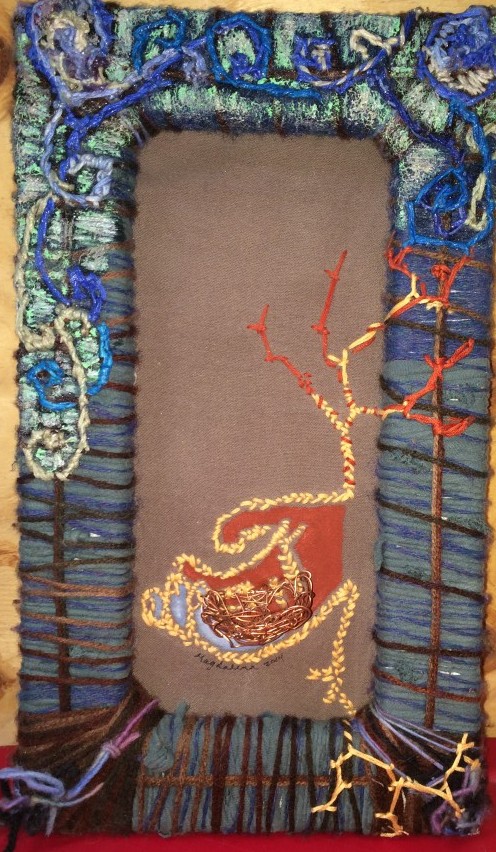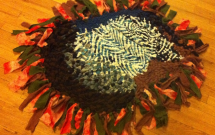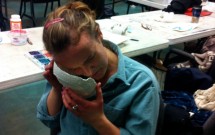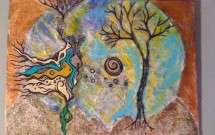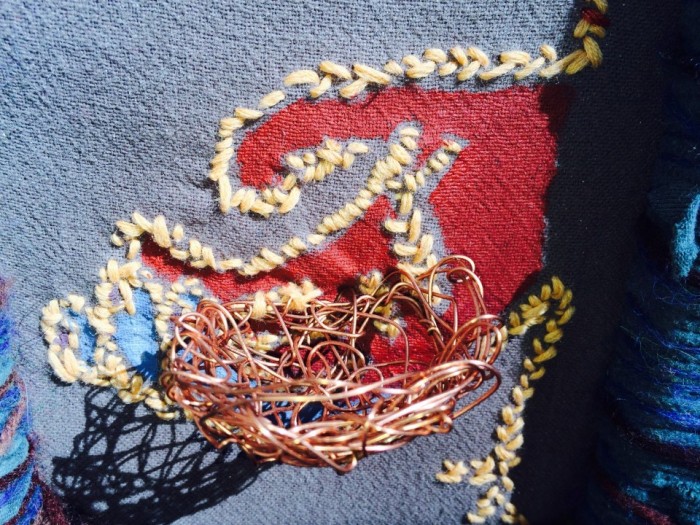
I am a big fan of reusing materials into new forms. Broken bits glued together to make guardians; Torn fabric to make new yarn or a rug; Old shoes into a Journey; Or large boxes into castles. After reading, Endangered Threads: Socially Committed Community Art Action, by Janis Timm Bottos (2011), I knew that there was a purpose to my drive to save, and reuse. And there are many leaders out there urging us to pay attention to our use of materials in this world. I tend to wear my clothing until it tears with bits of paint and grease stains littered about the garment; both professional clothes as well as comfy house clothing. A dear friend of mine loves clothing, and then sometimes falls out of love with certain pieces. Every year or so, she has bags of clothing for me to go through, to find treasures. I wanted to make something for this friend who so generously recreates my wardrobe, usually when many items are at their last wearing. 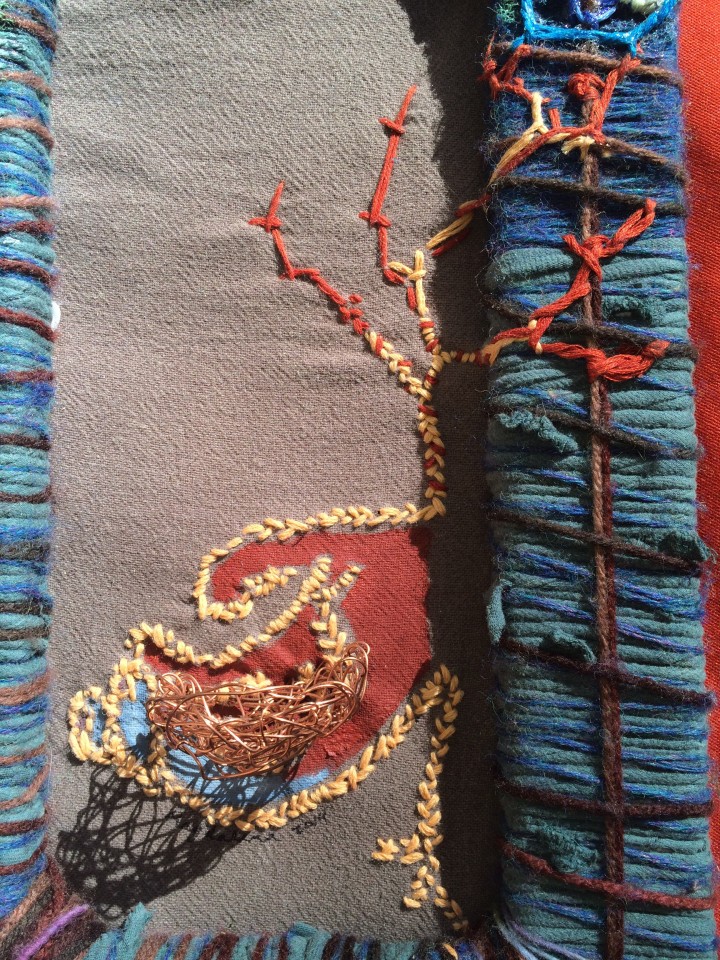 I took a frame from an old screen and wrapped it with green yarn made from a shirt that was once hers. I cut a rectangle from a pair of brown pants that we both wore, and embroidered a holding hand, rooted into the fabric, and growing up into the winds of the frame.
I took a frame from an old screen and wrapped it with green yarn made from a shirt that was once hers. I cut a rectangle from a pair of brown pants that we both wore, and embroidered a holding hand, rooted into the fabric, and growing up into the winds of the frame. 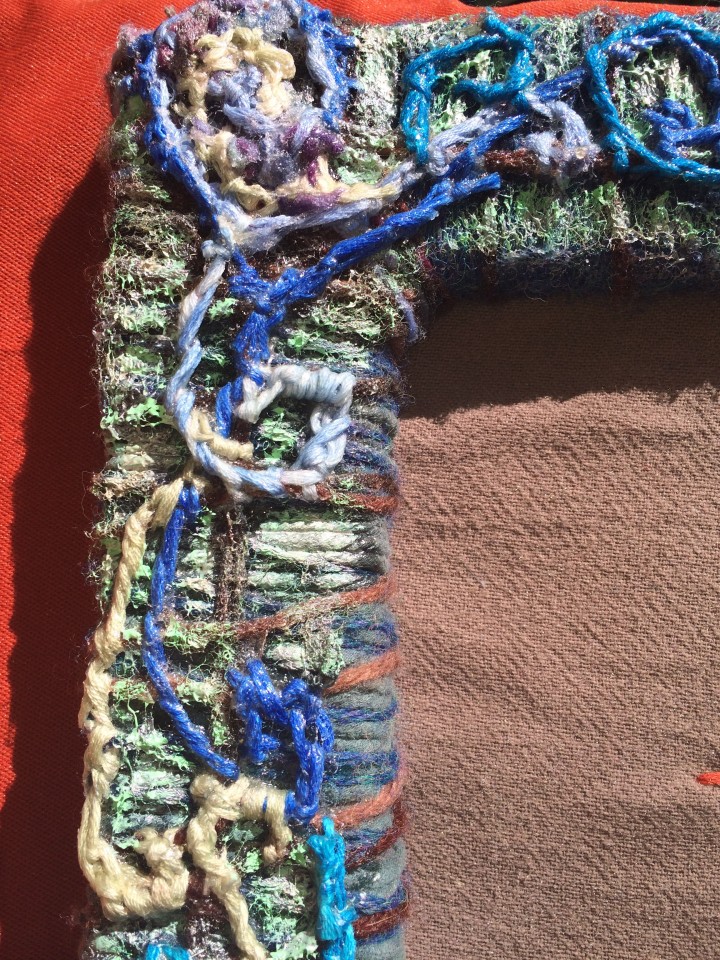 I painted color into the hand, and layers into the winds. I wove pieces of wire together to create a nest, another holding place to be held within the hand.
I painted color into the hand, and layers into the winds. I wove pieces of wire together to create a nest, another holding place to be held within the hand.
There is so much inspiration found in material that has lost its original branded use.
There is so much possibility within bits and pieces, and time and space.
I encourage you to pay attention to what you are throwing away, putting into plastic to be digested by the earth; perhaps there is another use for this material. Perhaps there is less material that you need in your life. I don’t pretend to be an expert in minimalism, however I am trying to be better at paying attention to my use and reuse.
What do you hold? What lies waiting? What can be let go?
Timm-Botos, Janis (2011). Endangered Threads: Socially Committed Community Art Action. Art Therapy: Journal of the American Art Therapy Association, 28(2): 57-63 
 Southwestern College Santa Fe, NM
Southwestern College Santa Fe, NM


